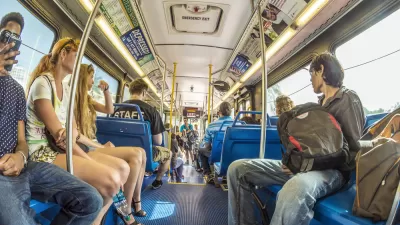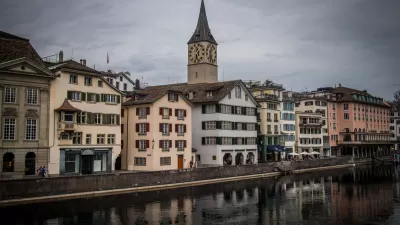We get it, China's cities are big and getting bigger. But what's it like to live there? Isaac Stone Fish takes a closer look at the quality of life in Chinese cities, and finds them almost uniformly monolithic and unlivable.
Fish, resident of the country for seven years, and visitor to 21 of its 22 provinces, offers his impression of life in Chinese cities and the historical roots of their modern development.
He credits the cause of their monolithic and virtually unlivable condition to the rebuilding of the country led by Mao Zedong and the communist party according to the principles of "a Soviet-era engineering textbook." According to Fish, Communist leaders "subscribed to the Soviet idea of what a city should be like: wide boulevards, oppressively squat, functional buildings, dormitory-style housing. Cities weren't conceived of as places to live, but as building blocks needed to build a strong and prosperous nation; in other words, they were constructed for the benefit of the party and the country, not the people."
"Yes," writes Fish, "China's cities are booming, but there's a depressing sameness to what you find in even the newest of new boomtowns... For all their economic success, China's cities, with their lack of civil society, apocalyptic air pollution, snarling traffic, and suffocating state bureaucracy, are still terrible places to live."
Not all is lost however, says Fish, Chinese cities are improving. Pockets of livability still exist in the areas that predate Communist Party control; "Chinese cities have little crime;" and "on the rare day when the sky is clear, you can even see the stars."
Thanks to Emily Williams
FULL STORY: Unlivable Cities

Alabama: Trump Terminates Settlements for Black Communities Harmed By Raw Sewage
Trump deemed the landmark civil rights agreement “illegal DEI and environmental justice policy.”

Planetizen Federal Action Tracker
A weekly monitor of how Trump’s orders and actions are impacting planners and planning in America.

Why Should We Subsidize Public Transportation?
Many public transit agencies face financial stress due to rising costs, declining fare revenue, and declining subsidies. Transit advocates must provide a strong business case for increasing public transit funding.

Understanding Road Diets
An explainer from Momentum highlights the advantages of reducing vehicle lanes in favor of more bike, transit, and pedestrian infrastructure.

New California Law Regulates Warehouse Pollution
A new law tightens building and emissions regulations for large distribution warehouses to mitigate air pollution and traffic in surrounding communities.

Phoenix Announces Opening Date for Light Rail Extension
The South Central extension will connect South Phoenix to downtown and other major hubs starting on June 7.
Urban Design for Planners 1: Software Tools
This six-course series explores essential urban design concepts using open source software and equips planners with the tools they need to participate fully in the urban design process.
Planning for Universal Design
Learn the tools for implementing Universal Design in planning regulations.
Caltrans
Smith Gee Studio
Institute for Housing and Urban Development Studies (IHS)
City of Grandview
Harvard GSD Executive Education
Toledo-Lucas County Plan Commissions
Salt Lake City
NYU Wagner Graduate School of Public Service




























